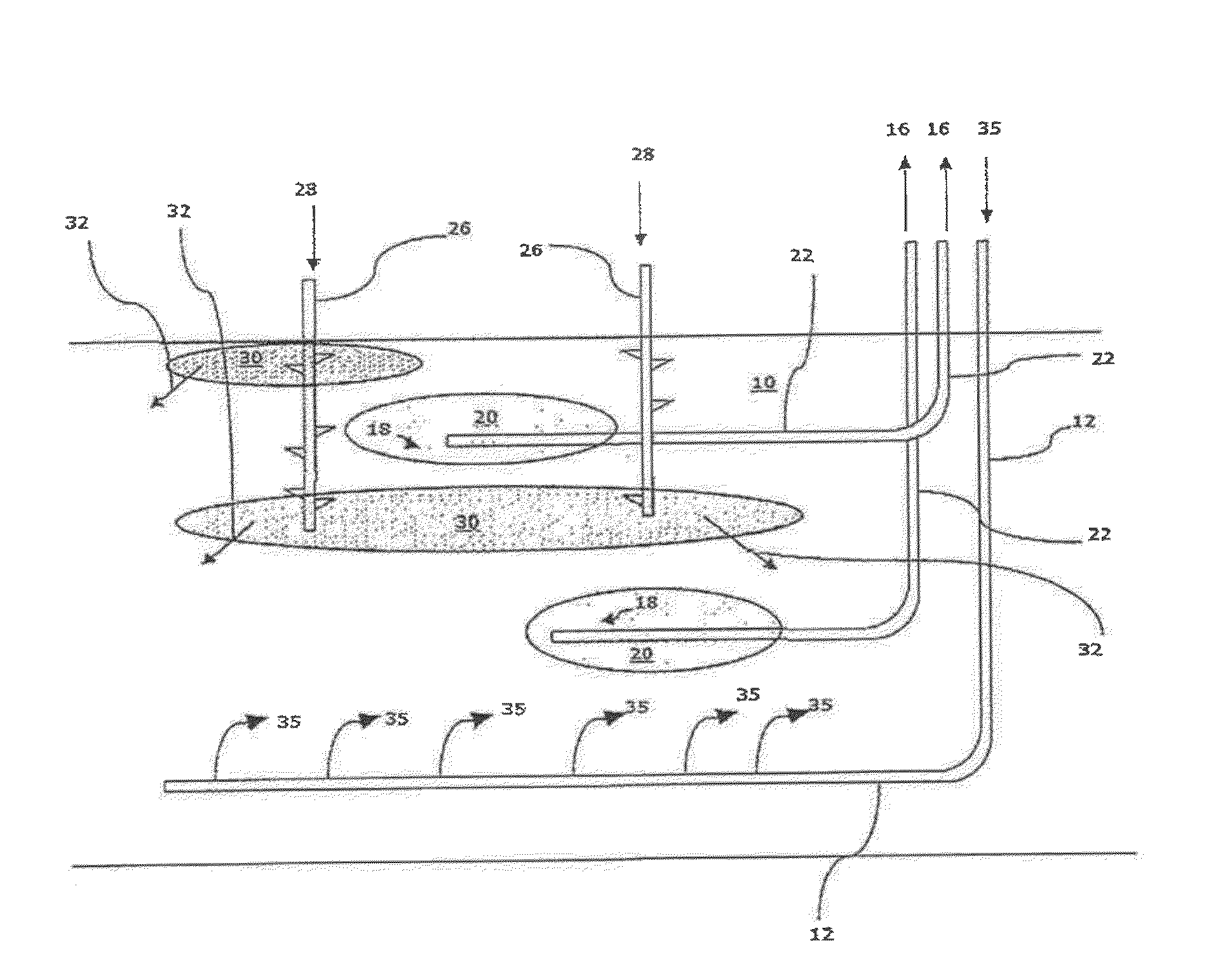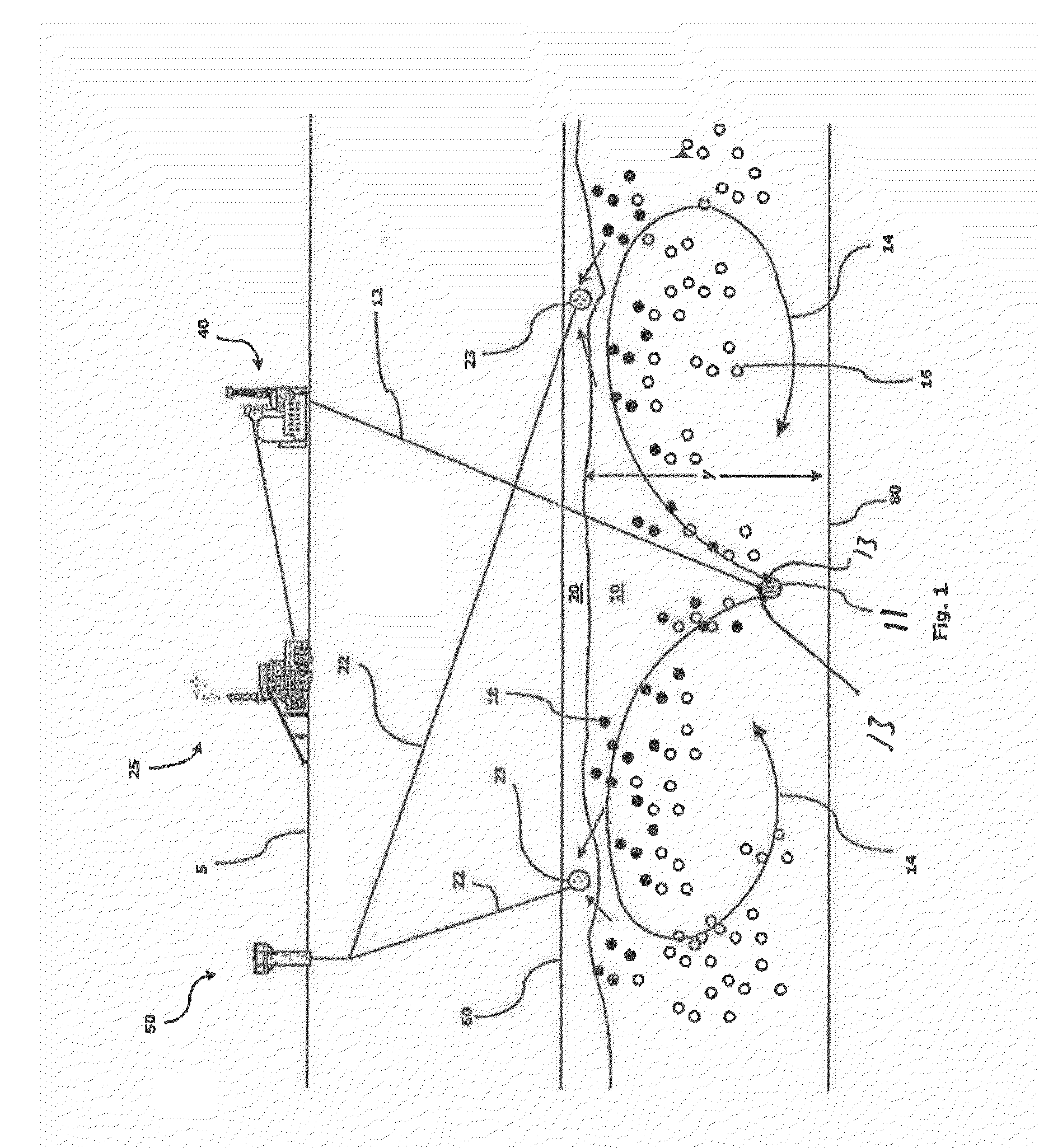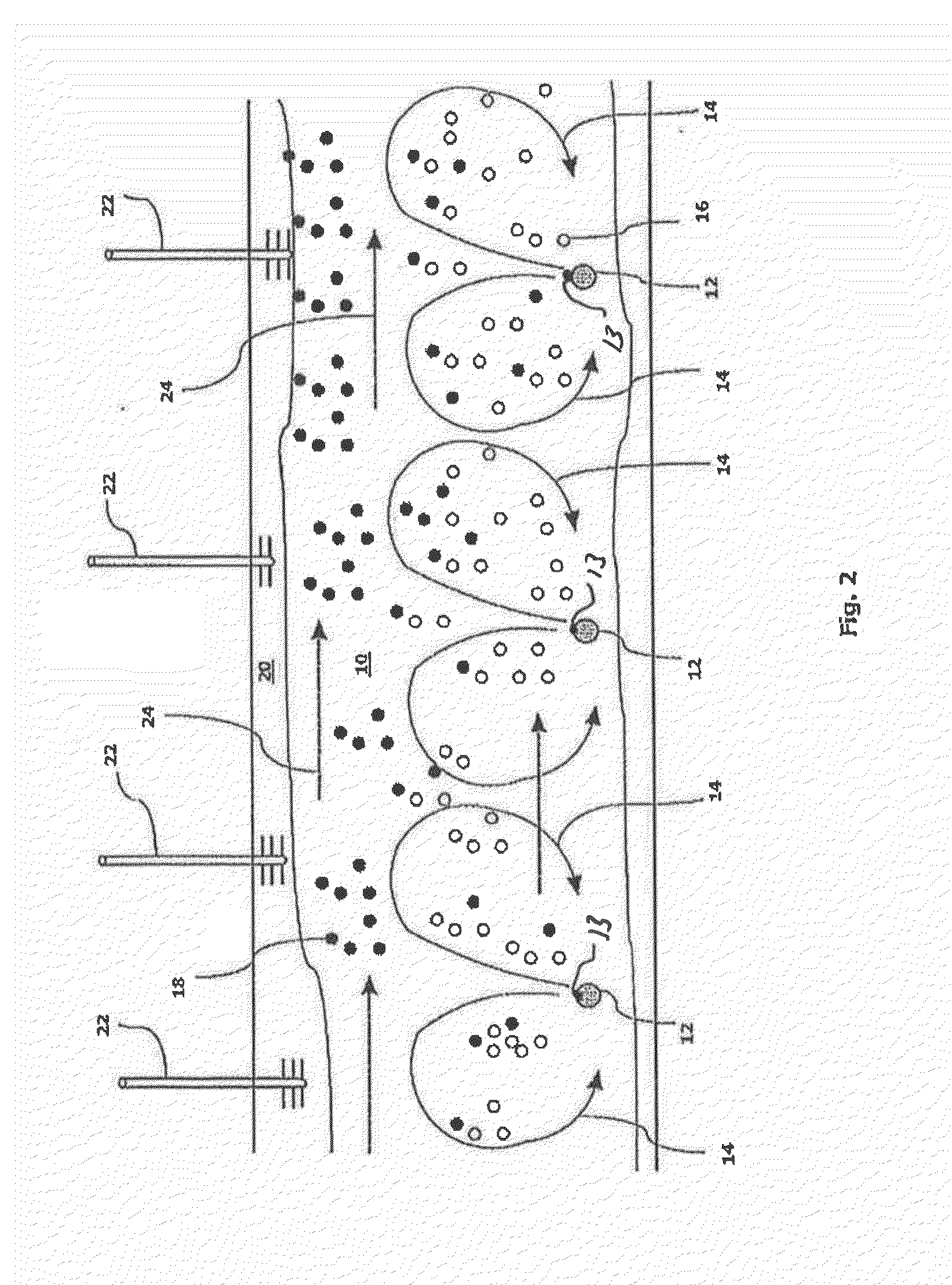Process for sequestration of fluids in geological formations
a geological formation and fluid sequestration technology, applied in the direction of fluid removal, insulation, borehole/well accessories, etc., can solve the problems of little human benefit, practical use of saline aquifers, and relatively little is known about, so as to improve the sequestration conditions
- Summary
- Abstract
- Description
- Claims
- Application Information
AI Technical Summary
Benefits of technology
Problems solved by technology
Method used
Image
Examples
example 1
Sequestration of Carbon Dioxide in a Saline Aquifer by Density Driven Convection
[0122]In this example, the gas mixture being injected includes CO2, which is highly soluble in water, along with other gases which are less soluble in water under the conditions of temperature, pressure, pH, and salinity within the formation. The gas mixture is injected at a high rate into a location close to the base of the formation. The formation has considerable vertical extent, or a dip which provides a vertical extent of about 20 m. For example, not excluding other possible cases that may be acceptable, a desirable saline formation would be located over 1000 m deep within the strata and of great lateral extent. It would have an intrinsic permeability of at least 1 Darcy in the vertical direction. The formation would have a porosity exceeding 15% with the pore fluid being saline water. It is considered more desirable if the formation has a natural dip (inclination) of up to 20°. It is advantageous i...
PUM
 Login to View More
Login to View More Abstract
Description
Claims
Application Information
 Login to View More
Login to View More - R&D
- Intellectual Property
- Life Sciences
- Materials
- Tech Scout
- Unparalleled Data Quality
- Higher Quality Content
- 60% Fewer Hallucinations
Browse by: Latest US Patents, China's latest patents, Technical Efficacy Thesaurus, Application Domain, Technology Topic, Popular Technical Reports.
© 2025 PatSnap. All rights reserved.Legal|Privacy policy|Modern Slavery Act Transparency Statement|Sitemap|About US| Contact US: help@patsnap.com



